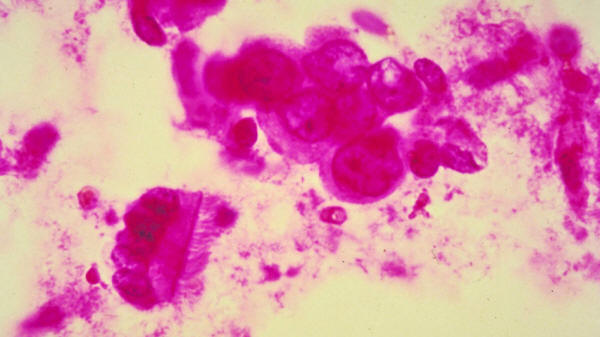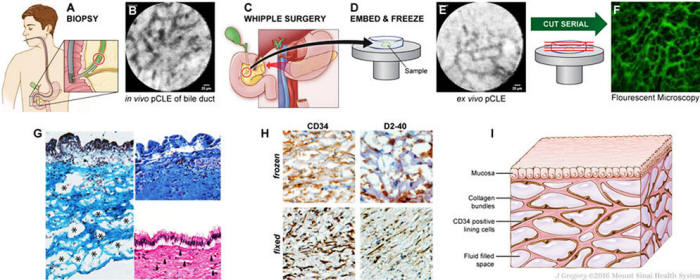|
the new organ may help decipher how cancer travels to lymph nodes. (Photo by American Cancer Society/Getty)
Ever heard of the "interstitium"?
That's what researchers are referring to when they talk about a new human organ that's been pretty much hiding in plain sight.
It seems that the body's connective tissue is fluid-filled, a feature that hadn't been noticed before, largely because doctors and researchers typically cut through that layer when studying the cells of a human body:
This drains the fluid that creates this new organ and so, voila:
They found it using new technology called confocal laser endomicroscopy (pCLE).
Figure (I) shows a schematic of the fluid-filled space supported by a network of collagen bundles lined on one side with cells. Illustration by Jill Gregory. Printed with permission from Mount Sinai Health System, licensed under CC-BY-ND.
A more detailed
explanation
here.
Previously, researchers believed these tissue layers to be a dense "wall" of collagen - a strong structural protein found in connective tissue.
The new finding reveals that, instead of a wall, this tissue is, rather, an "open, fluid-filled highway," said co-senior study author Dr. Neil Theise, a professor of pathology at New York University Langone School of Medicine.
The tissue contains interconnected, fluid-filled spaces that are supported by a lattice of thick collagen bundles, Theise said in the report. (Structure and Distribution of an Unrecognized Interstitium in Human Tissues).
It takes peer review and scientific consensus for the interstitium to actually gain the status of a new organ in the human body, but this research is a start along that path.
The finding may help decipher how cancer travels to lymph nodes:
|



